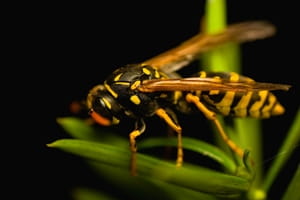
It seems like it should be enough to take care of insect control in your crops and gardens, but the trouble doesn't necessarily stop there. Livestock barns and haylofts are prime grounds for pests of both the vertebrate and invertebrate varieties.
We've all seen cows uselessly swatting at flies with their tails. Unfortunately, animals can't get rid of annoying pests on their own and outside of carpeting your barn in Venus fly traps, you'll have to give nature a hand to stop the buzzing insects. Texas A&M University said that the best way to control house flies and stable flies is to remove manure on a weekly basis. The annoying insects like to lay their eggs in animal waste or in silage, so by keeping your barn clean you're removing potential breeding grounds.
Horses can fall prey to a number of pests, such as black flies, lice and ticks. If you find any of these pests around your horses, the University of Kentucky suggested cleaning the animals of excess dirt and dust, and then applying a treatment suitable for horses. Many of the products you can find at the store are derived from plants, and are safe for use on mammals.
Pigs and sheep are susceptible to lice and ticks as well. Often an infestation can arrive with newly purchased animals, so it's a good idea to check your new livestock before introducing them into the herd. Cornell University said that if you find one animal with a pest problem, you should treat the entire herd just to be safe - it's the best way to prevent a wider infestation. If your animals become infested with mites or other pests that cause skin lesions, you should consult a veterinarian before treating the problem.
Haylofts are another prime hideout for pests, some of which can be caught with normal traps. Mice especially like to burrow into the warm haystacks during the winter months, but these can be managed easily with spring traps baited with peanut butter. A more annoying pest is the clover hay worm, which eventually becomes a purple and yellow moth. In the annual report of the North Carolina Agricultural Experiment Station, the authors claimed that the best remedy for an infestation of this worm is to thoroughly clean the hayloft before storing additional clover hay. Any leavings you clean out should be burned to destroy eggs hiding within.
A pest infestation in your barn can mean expensive vet bills or damage to farm resources. Proper maintenance is the best way to stop this damage before it happens.